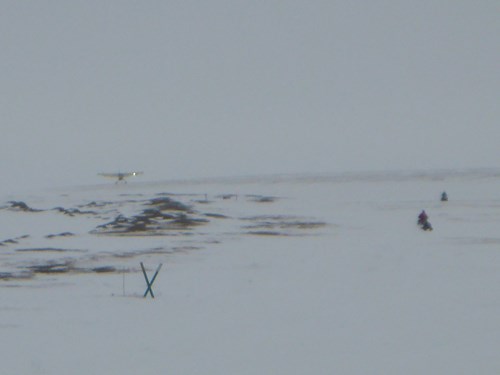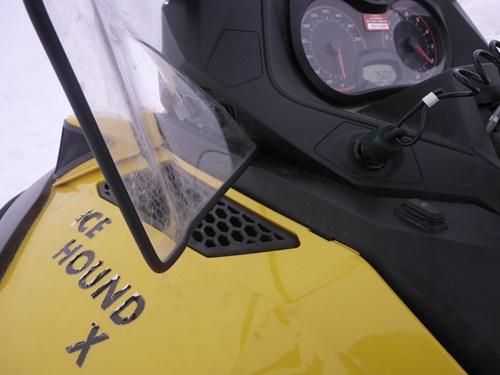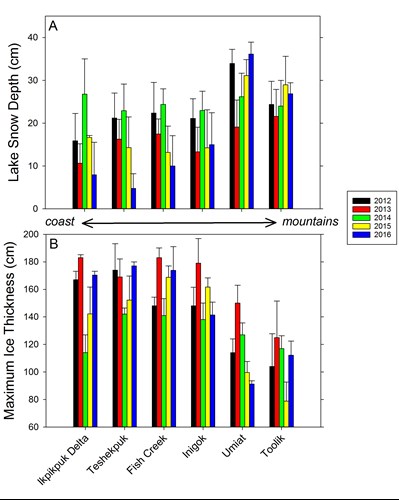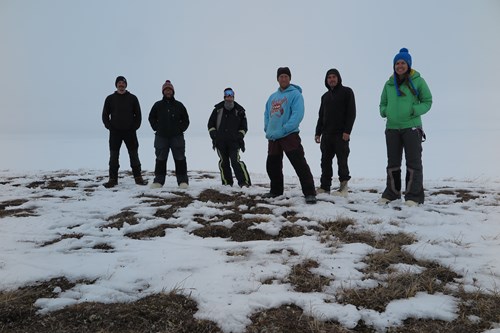- Dec 2
- Children of the Arctic
- Apr 18
- Snow, Wind, and Ice
- Apr 16
- Lesson from the Arctic
- Apr 14
- I Love Doing Science!
- Jan 28
- Bouncing Back in Whiteness
- Jan 27
- The Magical SAR Queen Rules!
- Jan 26
- Arctic Winter Science
- Jan 25
- A Day to Chill
5/3/2016
Today is about getting the geophysics gear and gals out to Deadhorse and camp demobilization. It’s hard to keep them down though as Andrea C wanted to get more TEM measurements on Peatball and drug Andy and Esther out before their planned pickup. Capt. Bawb with 70N just took off to pick up NMR gear and will come pack to bring out Esther and Andrea.

Then we’ll take down tents, pack and dry gear, and clean up the cabin for an early morning departure to Barrow about an 80 mi ride to the East to end our journey. Being able to travel the tundra from mountains to the coast is highly dependent on our snowgo’s (snowmobiles for lower 48 folks). My machine the Ice Hound X (Skandic ACE 900) just hit 750 miles and has been running great besides changing a belt and minor issue with wiring. Amazing they can take such punishment and still keep going so well.

It’s the best way to do field work out here though no question. You can take the gear you need to do the work, get to almost any site you need to go to, and aren’t limited by weather. Flying to remote sites is very costly, very weight limited, and almost always subject to weather. There’s only one road up here (the Dalton haul road) and probably the majority field work gets done near it, which causes a major bias in our understanding of the Alaskan Arctic in my opinion. Snowgo’s are the way to go!

Traveling from the mountains to the coast over the last five years visiting the same set of lakes and tundra sites is starting to give us some context of how this physiographic and climatic gradient changes from year to year. The main things we’ve learn are 1) ice thickness varies greatly across this gradient and patterns change from year to year and 2) ice thickness is primarily dependent on snow. Probably the typical pattern deeper snow in the mountains and thicker ice on the coast (2012, 2013, and 2015 are good examples), but in 2014 ice thickness and snow depths were more even from mountains to coast. This was probably related to wind regimes. This year showed a more extreme opposite pattern with very thin ice in the foothills and deep snow and thick ice on the coastal plain (ACP) despite relatively warm temperatures. It was a really windy winter on the ACP and the snowpack here suffered for it, particularly on lake ice.

It’s a bit sad to be winding down this trip and breaking up the ALISS band, but definitely time to go. Being gone this long from home and family is tough. Also we are rapidly running on of snow to make our machines happy and that’s the mojo!


Even after a day of fieldwork, gassing up machines, and packing sleds, there is time for science!
